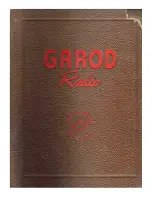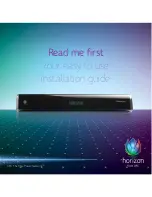
TEAM ME-4
Controls, displays and connectors
English
Installation of a CB-antenna
The antenna is one of the most important parts of the equipment. The type of antenna and
its location has a great effect on the range of operation. Please consider the following crite-
ria for selecting the best location and installation of your antenna:
❐
Make sure that the antenna is designed for radio operation on 27 MHz.
❐
The location of the antenna should be as high as possible without any obstacles nearby.
❐
The aerial cable should not be damaged and the plugs should be satisfactory connected.
❐
Make sure that the antenna cable is not bent too strong.
❐
The bigger the mechanical size of the antenna, the higher the range of operation.
When you install a mobile antenna please note the following advice:
❐
The antenna should be fixed in the centre of a bigger part of the coachwork.
❐
The mobile antenna coil should have the closest possible contact with a conducting metal-
lic surface of the bodywork of the car.
There are also some other possibilities to fix the antenna onto the car without the necessity
to drill a hole into the bodywork of your car, for example mounting the antenna onto the gut-
ter, mounting the antenna onto a holder on the cover of the boot or using an antenna with a
magnetic foot or using a windscreen antenna.
For base-station operation we recommend a stationary antenna on the roof, for example the
TEAM ECO 050 or ECO 200.
❐
Please don’t mount the CB antenna nearby a radio or TV antenna to prevent interference
of radio or TV reception.
❐
Keep an eye on power lines running along nearby when mounting the antenna on the roof.
" DANGER "
❐
The base-station antenna has to be connected via a lightning arrester.
❐
All connected cables including the antenna cable must not exceed a length of 3 m.
Aerial Connection
Before pressing the transmit key, a suitable aerial must be connected. The PL259 plug of the
aerial cable ( coax ) is connected to the SO239 socket ( 19 ) [ANT] on the rear panel. Make
sure, that all plugs are firmly tightened and properly soldered. Unsatisfactory connections can
damage the radio and will reduce the range of operation.
The antenna should be matched with the radio, otherwise a part of the transmit power will be
reflected at the antenna and will not be radiated. This causes also a drop in the range of oper-
ation. The matching can be carried out by a length adjustment of the antenna radial for a min-
imal SWR ratio which can be measured by a SWR meter ( e. g. TEAM SWR 1180P ). After
the measurement the SWR meter should be removed from the antenna line.
Setting up the TEAM ME--4
English
10
11
➪
UP channel selector key [
▲
]
➪
Down channel selector key [
▼
]
➪
Call tone key [ SIGNAL ]
➪
Channel rotary switch
➪
LED’s transmitting & receiving [ RX / TX ]
➪
LED channel display 1 - 40
➪
LED AM/FM or receiving tone [ M1 / M2 ]
➪
LED microphone gain [ MC ]
➪
LED channel scanning [ SC ]
➪
Priority channel key [ C9 ]
➪
Microphone gain key [ MC ]
➪
Squelch control & automatic squelch [ SQ / ASQ ]
➪
Channel scanning key [ SC ]
➪
Volume control, on/off switch [ VOL / OFF ]
➪
AM/FM or receiving tone key [ MD ]
➪
Microphone socket 6 Pin ( GDCH-standard )
➪
Microphone with curled cable and 6 Pin plug
➪
Aerial connector SO 239 [ ANT ]
➪
DC power supply cord [ DC 13.2 V ]
➪
Socket ( 3.5 mm ) for external speaker [ EXT-SP ]
➪
Socket ( 2.5 mm ) for external siginal meter [ S-METER ]
2
1
3
4
5
6
7
8
9
10
11
12
13
14
15
16
17
18
19
20
21
22
➪
Push to talk key [ PTT ]



































